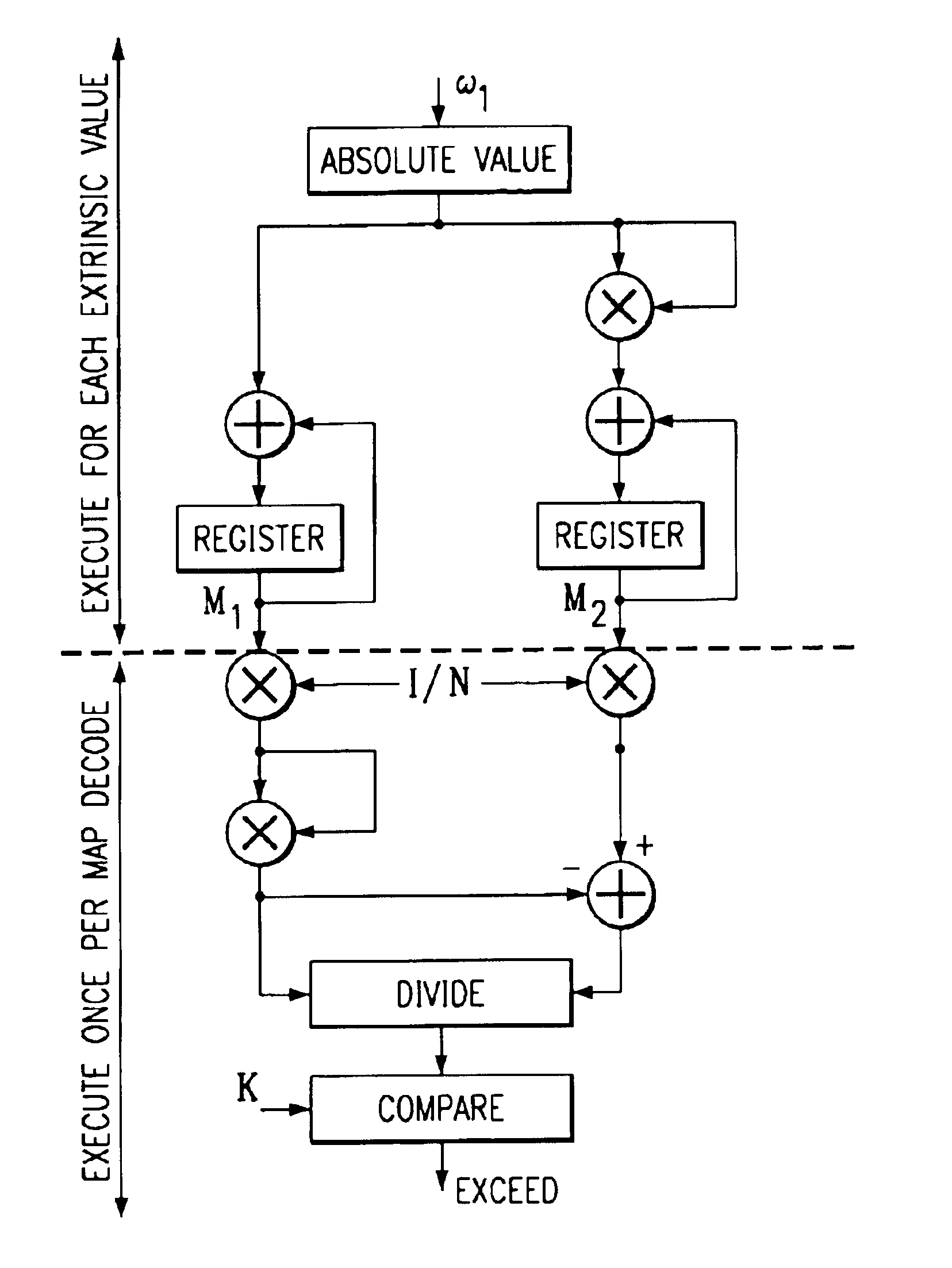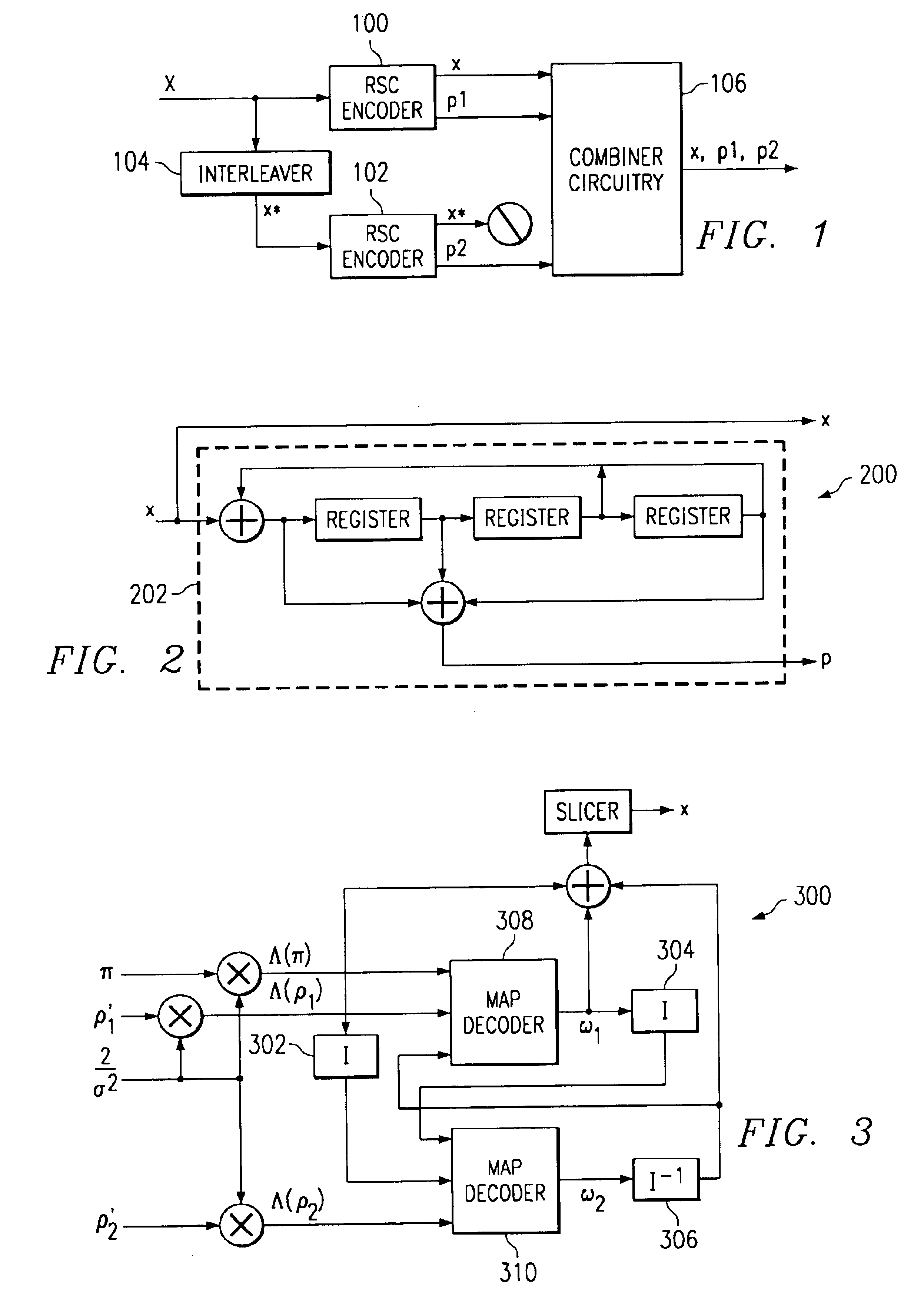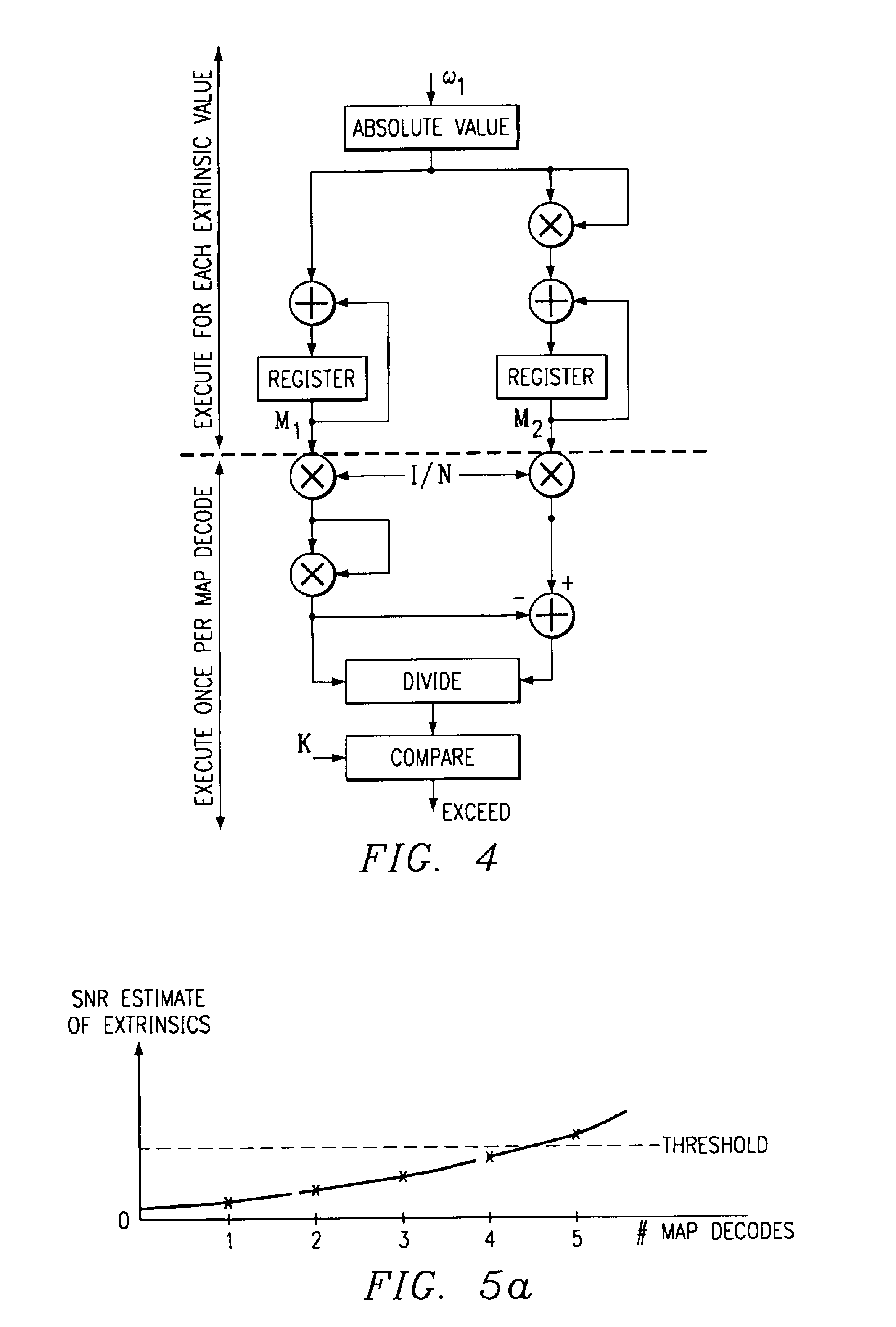Turbo decoder stopping criterion improvement
a technology of error control system and decoder, applied in the direction of amplitude demodulation, coding, code conversion, etc., can solve the problems of data degradation, data can be degraded, during writing, storage, or reading, etc., to improve processing speed and simplify hardware implementation.
- Summary
- Abstract
- Description
- Claims
- Application Information
AI Technical Summary
Benefits of technology
Problems solved by technology
Method used
Image
Examples
Embodiment Construction
[0028]The numerous innovative teachings of the present application will be described with particular reference to the presently preferred embodiment. However, it should be understood that this class of embodiments provides only a few examples of the many advantageous uses of the innovative teachings herein. In general, statements made in the specification of the present application do not necessarily delimit any of the various claimed inventions. Moreover, some statements may apply to some inventive features but not to others.
Additional Background
[0029]Coded digital communication systems use error control codes to improve data reliability. Both the physical propagation medium (the channel) and the hardware used to receive a signal introduce error in the form of noise or signal degradation.
[0030]Decoding makes use of redundant bits added to a data stream to detect errors and estimate the most probable value for data bits given the other bits received. The effectiveness of error contr...
PUM
 Login to View More
Login to View More Abstract
Description
Claims
Application Information
 Login to View More
Login to View More - R&D
- Intellectual Property
- Life Sciences
- Materials
- Tech Scout
- Unparalleled Data Quality
- Higher Quality Content
- 60% Fewer Hallucinations
Browse by: Latest US Patents, China's latest patents, Technical Efficacy Thesaurus, Application Domain, Technology Topic, Popular Technical Reports.
© 2025 PatSnap. All rights reserved.Legal|Privacy policy|Modern Slavery Act Transparency Statement|Sitemap|About US| Contact US: help@patsnap.com



